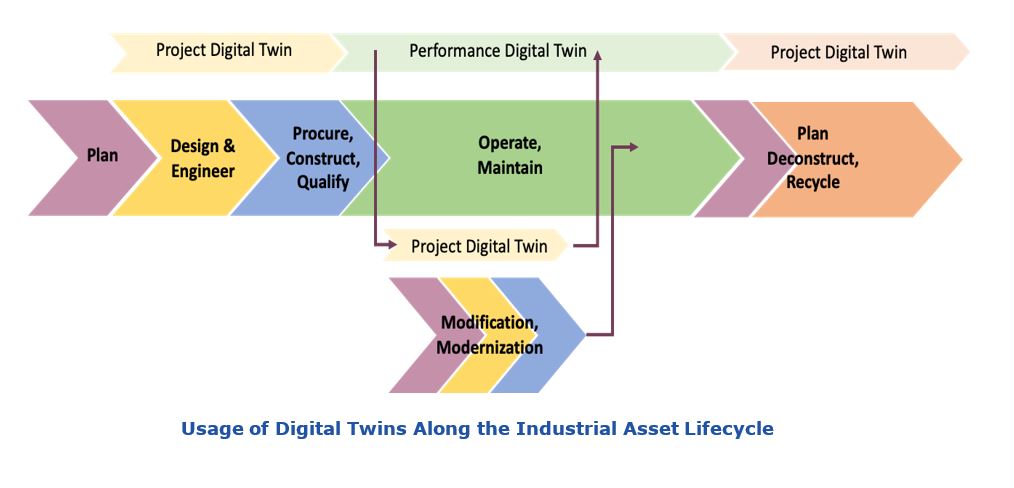

A digital twin is a representation of a physical asset that has a level of completeness and accuracy and includes context information that allows the user to understand its behavior and performance. We differentiate project digital twins used in engineering and construction, and performance digital twins used in operations and maintenance.

The basis for a digital twin is accurate, up-to-date and accessible asset information. Properly managed and deployed, the digital twin changes over the asset lifecycle time line to reflect the asset changes such that the user can see crucial information about how the physical asset is or was performing in the real world. On top of this basic digital twin, more sophisticated aspects of the twin can be constructed, such as engineering calculations, process simulation, 3D models, construction modeling, and immersive simulation. The different aspects of the digital twin are highly interdependent and their accuracy and currency impact on each other’s performance, and thereby project or plant performance. Therefore, the integrity and quality of data making up the digital twin must be managed efficiently through data governance*).
In our view, an organization is digitally ready when it has reached a minimum threshold of digital maturity in resources, systems, organization and culture that are required to achieve success through digital transformation.
Readiness includes a minimum threshold of digital maturity in resources, systems, organization, and culture, upon which digital activities can be built, aligned with business strategy. Constructing digital twins as part of digitalization can improve performance in engineering, operations and maintenance, among others, provided there is a company-wide, consistent approach that is supported by corporate digital strategy. The paper discusses skills and competencies, IT architectures, collaboration and culture change, required to support the successful application of digital twins.
The organization can leverage this digital foundation to build digital infrastructure and activities to reach the levels of digital maturity required to execute its strategy efficiently; and maximize the performance of the organization by supporting digital or traditional activities. Every organization should determine which level of digital maturity and digital performance is optimal for its situation.
We recently published a white paper that discusses minimum threshold digital maturity, how digital twins can be built based on asset information, and how they must be maintained and kept consistent. As collaboration in company networks and value chain ecosystems gain importance in the digital era, an effective IT architecture facilitating collaboration and data federation (rather than replication), are open connected data environments. The white paper describes what culture is, and how it can enable or destroy digital transformation. We suggest starting points in changing culture, mindset, and behavior. The white paper discusses skills and competencies required to create, deploy, and maintain a system of digital twins; and concludes with possible applications and expected benefits of using digital twins, which include:
*) DiStefano, R.S. and S.J. Thomas, “Asset Data Integrity Is Serious Business,” Industrial Press, 2010

